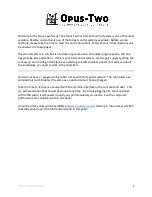
PSR-A3000 Owner’s Manual
139
St
yl
es
2
3 HIGH KEY / NOTE LIMIT
The settings here adjust the Octave of the notes converted from the original ones through NTT and NTR.
4 RTR (Retrigger Rule)
These settings determine whether notes stop sounding or not and how they change pitch in response to chord
changes.
[4
]/
[5
]
HIGH KEY
This sets the highest key (upper octave limit) of the note transposition for
the chord root change. Any notes calculated to be higher than the highest
key are transposed down to the next lowest octave. This setting is available
only when the NTR parameter (page 137) is set to “Root Trans.”
[6
]
NOTE LIMIT
LOW
These set the note range (highest and lowest notes) for Voices recorded to
the Style channels. By judicious setting of this range, you can ensure that
the Voices sound as realistic as possible—in other words, that no notes out-
side the natural range are sounded (e.g., high bass sounds or low piccolo
sounds).
[7
]
NOTE LIMIT
HIGH
STOP
The notes stop sounding.
PITCH SHIFT
The pitch of the note will bend without a new attack to match the type of the new
chord.
PITCH SHIFT TO
ROOT
The pitch of the note will bend without a new attack to match the root of the new
chord. However, the octave of the new note remains the same.
RETRIGGER
The note is retriggered with a new attack at a new pitch corresponding to the
next chord.
RETRIGGER TO
ROOT
The note is retriggered with a new attack at the root note of the next chord. How-
ever, the octave of the new note remains the same.
Example—When the highest key is F.
Root changes
Notes played
Example—When the lowest note is C3 and the highest is D4.
Root changes
Notes played
High Limit
Low Limit
Summary of Contents for PSR-A3000
Page 100: ...100 PSR A3000 Owner s Manual Memo ...
Page 218: ...Memo ...
Page 220: ......
Page 223: ......
















































